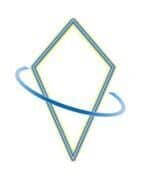Selected Innovations

Optimization of hot Fusion
Hot fusion, as practiced with state-of-the-art technology and a specific energy input, can generate the same plasma with hypothetically 1000 times greater efficiency by shifting the excitation away from the electron to the proton, or provide the corresponding higher temperatures for preheating. The Field-Space-Mechanics model provides the corresponding excitation frequency with the general formula for particles. For the efficiency of proton excitation, it would be worth considering using pure hydrogen and going through the stages of the sun. The best cost-benefit factor and the process with the lowest unwanted radiation would be preferable.
The relativistic basic formula for plasma generation comes from the energy-space-time equivalence.

The conventional fusion process converts tritium and deuterium into helium, a neutron, and heat:

The proposed process heats the plasma to the same level that the stages of the sun undergo after release into the reactor:

Cold Fusion
Unfortunately, the current state of technology for implementing hot fusion does not allow for field-space displacement because the heat supplied ensures the process with 1000 times the efficiency. If the process is designed differently so that the plasma can only enter the fusion process under the condition of a very specific fusion location, then the relativistic effect for the plasma at this location has a maximum effect. Hypothetically, efficiency is increased to millions of times that of the conventional process. With regard to the controlled continuous utilization of the fusion process at a desired location, the temperature required to produce this plasma can be reduced by a factor of 1000. The plasma is generated in the four-digit temperature range and has a comparable output to that of the hot fusion process. If the process is unexpectedly stopped, the plasma falls to the floor of the reactor chamber and cools down quickly.


Simulation:

The Space-Distortion-Vector - interdimensional Travel
The space-distortion-vector describes a range that an object can overcome if it itself is the source of gravity. Since any electromagnetic manipulation automatically involves a space-time distorting effect, a reaction mass is required that is ionized with a specific excitation frequency to form a quark-fion plasma. For this purpose, the basic design of the cold fusion reactor can be used with minor modifications. The field generated therein remains in the chamber and, as its intensity increases, is led to a relativistic state with a field shift. This field could be controlled magnetically or electrically. Depending on the technical possibilities, a field that is easier to control is selected. Without going into too much technical detail, this field is applied in a torsional manner around the generating object with a horizontal distance of RBH as its field radius. This field radius would correspond to the event horizon, where an object experiences a certain target velocity. With uniform distribution of the torsion field around the source, no change occurs at first. Part of this field is then deflected so that it also acts horizontally and thus orthogonally to the rest of the torsion field. A resulting space-time-distortion occurs at the point of contact, which propagates at the maximum speed c, but is distorted outward by the space-time deformation in such a way that a significantly greater distance, equal to the length of the field radius, is overcome for a fictitious fion RfionX. The space-distortion-vector is calculated from the difference.

The trigonometric term indicates that, for the particle-field, a horizontal alignment of the space-distortion-vector leads to its maximum value. For the wave-field, this means that the field-space displacement must be at a quarter of the radian measure in order to reach its maximum value.
The object would be in a field-space-shifted state with intermediate mirrored forces within the gravitational field.

The field-space shift leads to exactly opposite field force directions for the object relative to its environment. As a result, the object no longer interacts with its visible environment. It is shifted in its existence as invisible matter (dark matter). It is invisible in particle-field. In this way, it can pass through all real objects without interacting with them. A space-distorted movement takes place without any movement of its own, so that despite covering large distances, it does not lead to any relativistic effects or noticeable inertial forces. An outside observer sees an object that is in one place at one moment and then makes a jerky movement in all directions.
The simulation below shows the forces that arise, starting from the object and the counterforce of space-time, which attempts to compensate for this deformation.

The formulas for calculating the space-distortion-vector and the basic design and excitation of the reactor mass are provided in the document.

